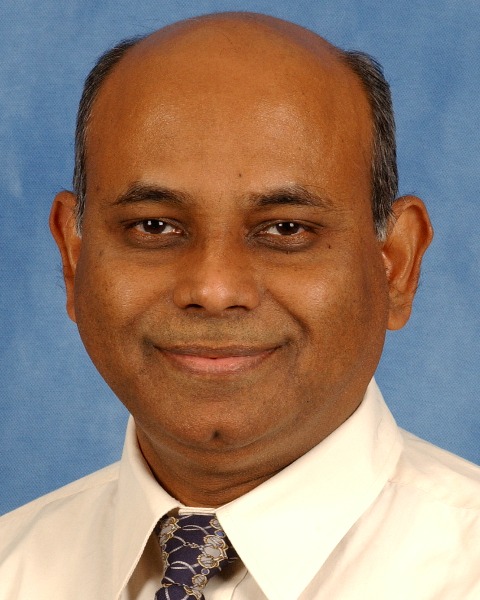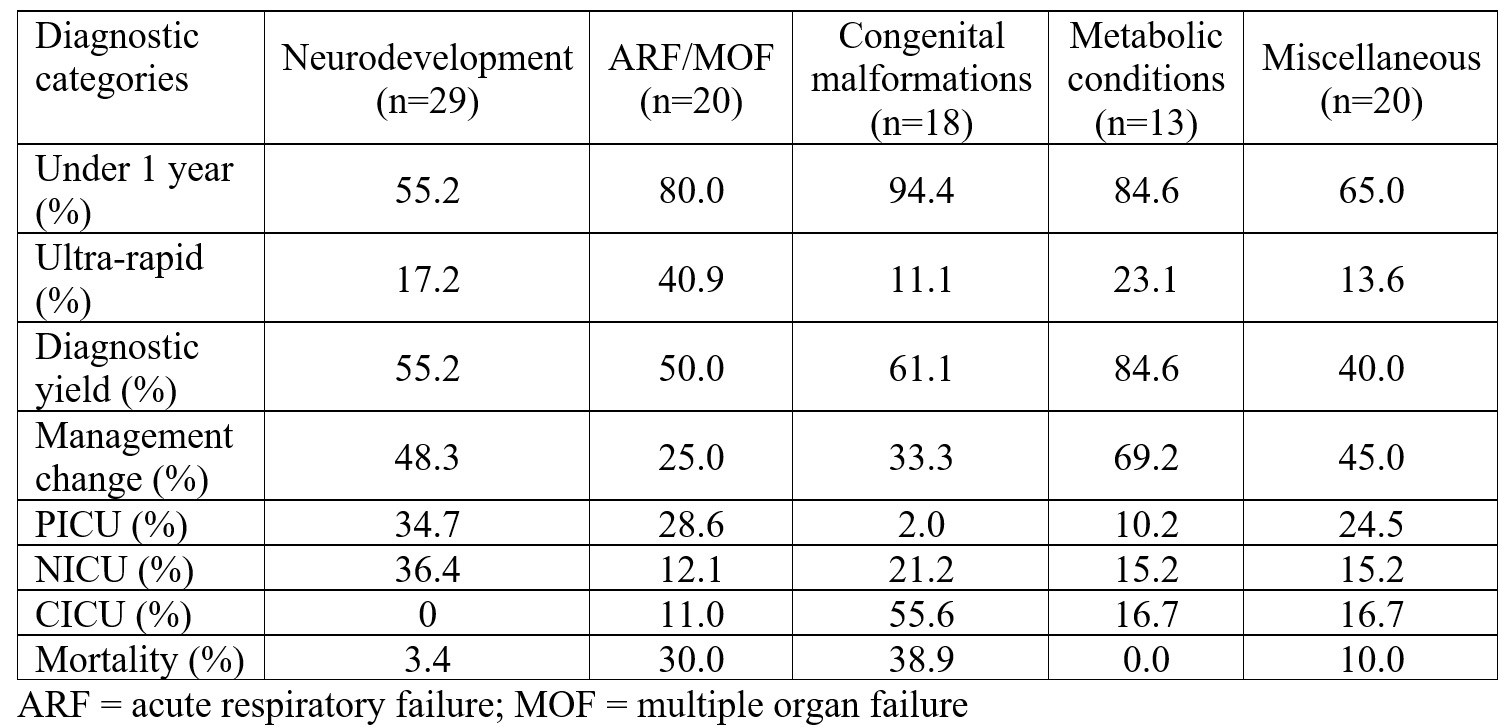Critical Care
Category: Abstract Submission
3: Critical Care I
27 - Rapid Whole-genome Sequencing in Acutely Ill Children: a Single Pediatric Center Experience
Friday, April 22, 2022
6:15 PM - 8:45 PM US MT
Poster Number: 27
Publication Number: 27.102
Publication Number: 27.102
Balagangadhar R. Totapally, Nicklaus Children’s Hospital, Miami, FL, United States; Magaly Diaz-Barbosa, Nicklaus Children's Hospital, Miami, FL, United States; Jun Sasaki, Weill Cornell Medicine, New York, NY, United States; Anuj Jayakar, Nicklaus Children’s Hospital, miami, FL, United States; Prithvi Raj Sendi Keshavamurthy, Nicklaus Children’s Hospital, Miami, FL, United States; Diana Soler, Nicklaus Children’s Hospital, Miami, FL, United States; Paula S. Espinal, Nicklaus Children’s Hospital, Miami, FL, United States; Daria Salyakina, Nicklaus Children’s Hospital, Miami, FL, United States; Parul Jayakar, Nicklaus childrens hospital, Miami, FL, United States

Balagangadhar R. Totapally, MD (he/him/his)
Chief, Division of Critical Care
Nicklaus Children’s Hospital
Miami, Florida, United States
Presenting Author(s)
Background: Standard genetic testing has a low diagnostic yield. The whole-genome sequencing (WGS) is reported to have rapid turnaround times and higher diagnostic yield.
Objective: To describe the turnaround time, diagnostic yield, and the features associated with a positive diagnosis of rapid WGS (rWGS) testing.
Design/Methods: The rWGS testing was done in patients with an undiagnosed, complex, and potentially genetic abnormality in acutely ill children under an IRB-approved protocol. A phenotype prioritized analysis approach for WGS was utilized. The test was ordered by a treating physician in consultation with a geneticist. The location of the patient, age, clinical phenotype, and diagnostic categories were used in the analysis of diagnostic yield. The turnaround times (preliminary and final results), diagnostic yield, number of genes detected, inheritance pattern, zygosity, and the clinical impact of positive or negative tests were analyzed.
Results: Out of a total of 100 children included in the study, 84 abnormal gene variants were detected in 56% of patients. The median patients’ age was 46 (IQR: 13-391) days. 73% were less than 1 year of age. The admission location was PICU in 49%, NICU in 33%, and CICU in 18%. The underlying admission diagnostic categories included neurodevelopmental issues in 29%, respiratory or multiorgan failure in 20%, congenital malformations including CHD in 18%, metabolic issues in 8%, and miscellaneous in 20%. Maternal testing was done in 99% and paternal testing in 79%. Ultra-rapid processing was requested in 22%. Preliminary results were available in 26%. In 43%, there was a change in clinical management based on either a positive (55%) or negative test (27%). The diagnostic yield was not different based on age group, location of admission, or diagnostic categories. However, a positive test was associated with a change in management (OR: 3.3; 95% CI: 1.4-7.7). The median time to preliminary results was 3 (2-4.3) days and the median time to final results was 9 (6-14) days. The families were counseled 2 (1-3) days after the tests have resulted. When the ultra-rapid test was ordered the median time to result was shorter [5 (3-7) vs 11 (7-15) days; p < 0.001]. The mortality rate in the cohort was 16% with 50% in the ultra-rapid group (OR: 5; 95% CI: 1.6-15.6).Conclusion(s): In acutely ill children with clinical suspicion of a genetic disorder the diagnostic yield of rWGS is 56% and resulted in a change in the management in 43%. rWGS testing is potentially useful in the management of acutely ill children and its specific role and financial implications need further exploration.
Table 1. Demographic characteristics, diagnostic yield, and outcomes of rapid whole-gene sequencing based on diagnostic categories.
Objective: To describe the turnaround time, diagnostic yield, and the features associated with a positive diagnosis of rapid WGS (rWGS) testing.
Design/Methods: The rWGS testing was done in patients with an undiagnosed, complex, and potentially genetic abnormality in acutely ill children under an IRB-approved protocol. A phenotype prioritized analysis approach for WGS was utilized. The test was ordered by a treating physician in consultation with a geneticist. The location of the patient, age, clinical phenotype, and diagnostic categories were used in the analysis of diagnostic yield. The turnaround times (preliminary and final results), diagnostic yield, number of genes detected, inheritance pattern, zygosity, and the clinical impact of positive or negative tests were analyzed.
Results: Out of a total of 100 children included in the study, 84 abnormal gene variants were detected in 56% of patients. The median patients’ age was 46 (IQR: 13-391) days. 73% were less than 1 year of age. The admission location was PICU in 49%, NICU in 33%, and CICU in 18%. The underlying admission diagnostic categories included neurodevelopmental issues in 29%, respiratory or multiorgan failure in 20%, congenital malformations including CHD in 18%, metabolic issues in 8%, and miscellaneous in 20%. Maternal testing was done in 99% and paternal testing in 79%. Ultra-rapid processing was requested in 22%. Preliminary results were available in 26%. In 43%, there was a change in clinical management based on either a positive (55%) or negative test (27%). The diagnostic yield was not different based on age group, location of admission, or diagnostic categories. However, a positive test was associated with a change in management (OR: 3.3; 95% CI: 1.4-7.7). The median time to preliminary results was 3 (2-4.3) days and the median time to final results was 9 (6-14) days. The families were counseled 2 (1-3) days after the tests have resulted. When the ultra-rapid test was ordered the median time to result was shorter [5 (3-7) vs 11 (7-15) days; p < 0.001]. The mortality rate in the cohort was 16% with 50% in the ultra-rapid group (OR: 5; 95% CI: 1.6-15.6).Conclusion(s): In acutely ill children with clinical suspicion of a genetic disorder the diagnostic yield of rWGS is 56% and resulted in a change in the management in 43%. rWGS testing is potentially useful in the management of acutely ill children and its specific role and financial implications need further exploration.
Table 1. Demographic characteristics, diagnostic yield, and outcomes of rapid whole-gene sequencing based on diagnostic categories.

